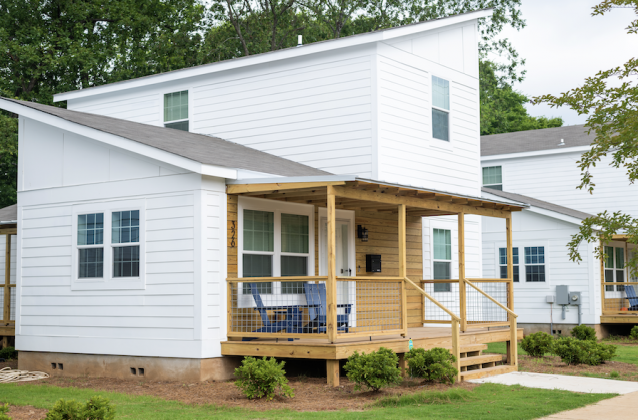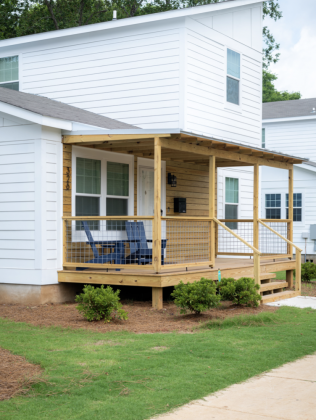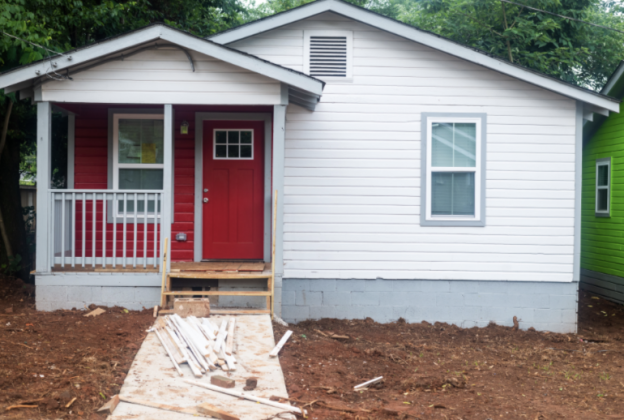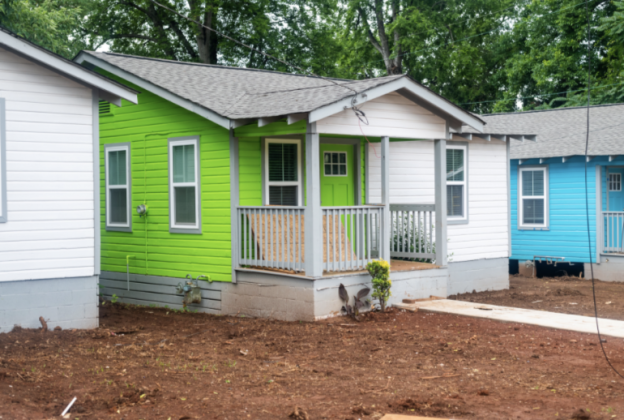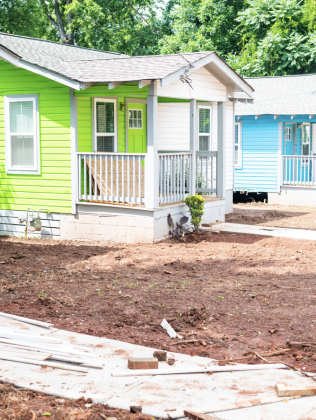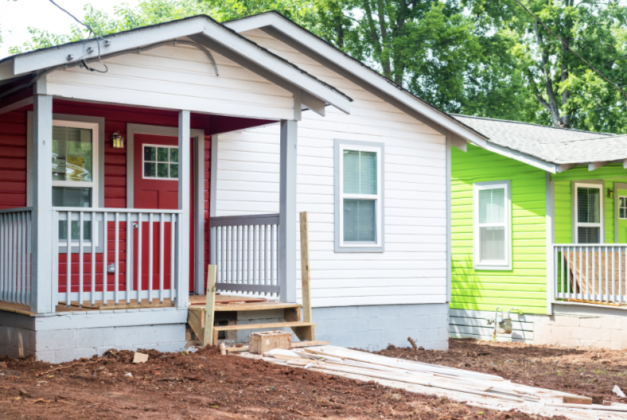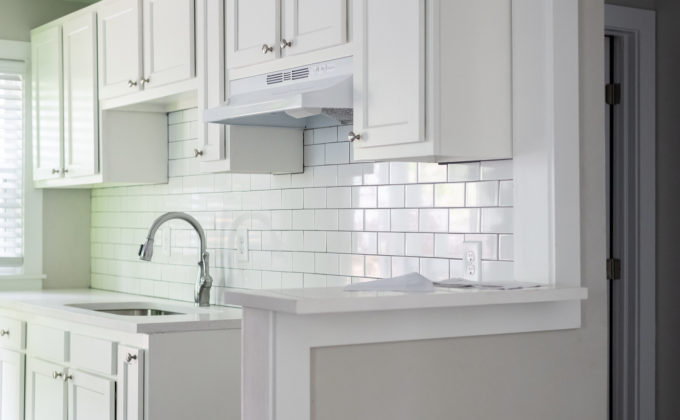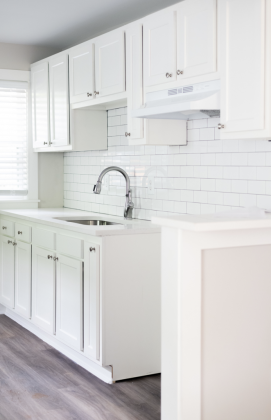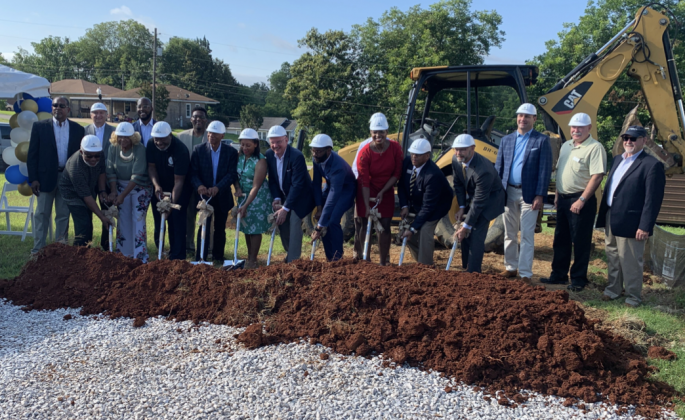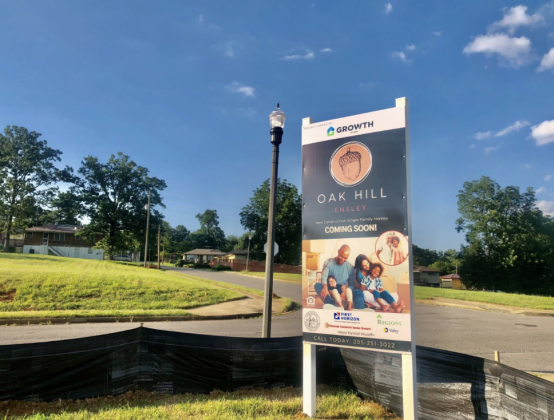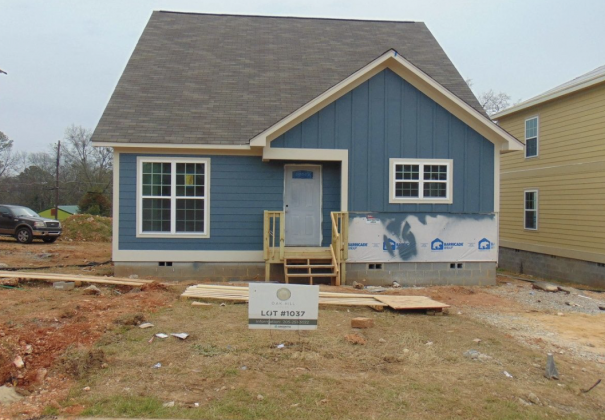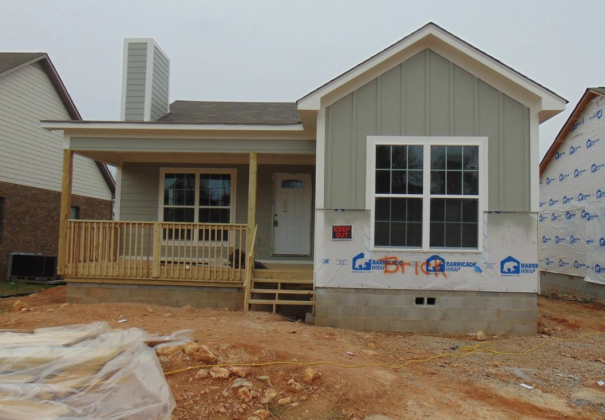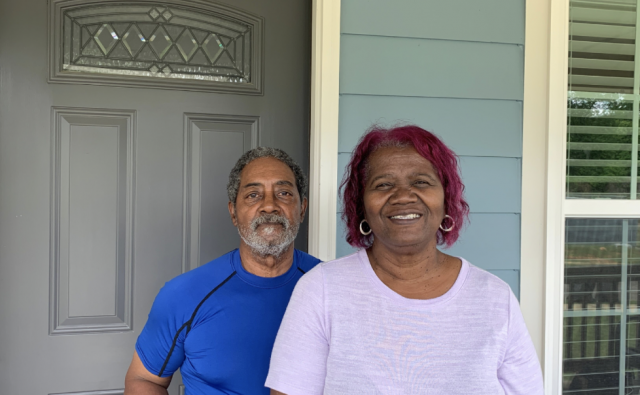
By Ryan Michaels
The Birmingham Times
On a humid Friday morning in early June, a little girl plays on the front steps of a newly constructed house in Birmingham’s Belview Heights neighborhood. Her grandparents, Augustus Payne, a retired furniture salesman, and Sharron Payne, a retired teacher’s aide, sip coffee and watch from the porch that sits on land where the former Camellia Terrace apartments were located.
The apartments, where the Paynes lived for 20 years until they were demolished in the early 2000s, have been replaced by the newly developed Oak Hill development of Belview Heights in Ensley, which now features 27 brand new homes on what were formerly vacant lots in the neighborhood.
Oak Hill—the result of a partnership between the city of Birmingham and the Housing Rehab Fund of the National Community Reinvestment Coalition—is one of many examples of efforts to make affordable housing available across the city.
Over the last few years, Birmingham has undertaken several housing-related initiatives that include Oak Hill and several others, such as
- Live on 1st in North Titusville, a development with modular single-family homes, each comprised of about 1,500 square feet
- Green Meadow Apartments LLC in the Oxmoor neighborhood, a multiphase development featuring single-family, multifamily, and senior housing for an estimated 900 residents and a commercial town center
- Southtown Court redevelopment in the Southside neighborhood, a mixed-use development incorporating 560 residential units, as well as office, retail, and hotel space
- Ensley High School in the Ensley neighborhood, featuring 244 homes, commercial space, green space, and an early childhood learning center.
Chris Hatcher, chief planner for the city of Birmingham’s Department of Community Development, said the goal is to create affordable “housing that is accessible to all, no matter what your income is, … so we’ve got to have a good mix of market-rate housing and affordable housing where the rubber meets the road.”
Kelvin Datcher, Mayor Randall Woodfin’s senior advisor for special projects, underscored the need for a variety of housing types throughout the city.
“It is essential that we have a broad array of options for our current residents, as well as folks who are now being attracted back to the city or attracted to the city because of the energy and the momentum they’re seeing from all that’s happening across the entire community,” Datcher said.
Having a diversity of housing options is key, he added: “We want folks of all economic strata to feel comfortable in Birmingham.”
Here’s a closer look at some of the city’s housing-development efforts.
OAK HILL
When the Paynes left the Camellia Terrace apartments after “approximately 20 years,” they moved closer to the Five Points West community. Until May, they lived in a house in Dolomite, on the westernmost tip of Birmingham’s city limits. At the end of last month, however, they decided to return to Belview Heights, moving into Oak Hill, saying they wanted to help improve the community.
“If people were to move back into the city, I think it would get better,” said Sharron Payne. “Instead of moving out of the city, which is what they’re trying to do now, [people moving back to the city would] revitalize different areas.”
One of the positives about Oak Hill is that everyone who has bought a home there lives there, said the Paynes.
“The people [at Oak Hill] are settled people right now, and they all seem to be very, very nice,” said Sharron Payne. “When I say ‘settled’ people, I’m talking about people that are over 50 and homeowners, not renters.”
Funding provided by the city of Birmingham allowed residents in the Oak Hill development to come into the new homes with more equity than the usual homebuyer has after making a down payment.
Oak Hill is a great example of how the city can focus “squarely” on affordable housing, Datcher said. Because owners at Oak Hill had partially subsidized down payments, it enabled some residents, who might otherwise not have the opportunity, to own new homes.
“This is one of the largest single-family investments, single-family developments in the city that anybody can remember inside one of our neighborhoods, so it’s really exciting,” said Datcher. “We were able to meet that need between what some of our residents could borrow and the actual cost of construction.”
The city owns many of the vacant lots throughout Birmingham, and that produces a unique opportunity to incentivize development, both big and small, according to Datcher.
GREEN MEADOW APARTMENTS LLC
The city authorized the sale of real estate with Black-owned Green Meadow Apartments LLC for a 222-acre development deal that will result in the building of 900 residential units near Lakeshore Parkway. The $100 million deal is potentially the largest “economic impact” effort led by African Americans in the city, said Cornell Wesley, director of Birmingham’s Department of Innovation and Economic Opportunity, during a public announcement in March.
Selling vacant lots to developers for reasonable prices is one of the best tools the city has for incentivizing development, Datcher said.
“Part of our contribution to keeping the cost down is acquiring and conveying a property to a developer,” he added. “When a developer shows that they have the resources to do the kind of construction we like, then we can be creative.”
LIVE ON 1ST
Live on 1st is a partnership between Navigate Affordable Housing Partners and Alabama Power through which modular homebuilding technology was used to build three single-family homes in North Titusville.
The homes are sold via lease-purchase agreements, which allow buyers more time to save money and qualify for a mortgage. Before purchasing, buyers also have access to financial counseling services through nonprofits like the Hispanic Interest Coalition of Alabama (¡HICA!) and Neighborhood Housing Services of Birmingham. Alabama Power will monitor energy use in the homes to ensure that residents can keep their bills low.
SOUTHTOWN
The Southtown Court public housing redevelopment effort in the Southside neighborhood will feature 560 residential units, 220 of which will be affordable housing. Now designated a “mixed-use downtown” district, the property will be transformed into an area that includes multifamily residential, hotel, office, retail/dining, medical office, parking garage, green space, and bike lanes. Prior to the redevelopment, Southtown Court, one of the Housing Authority of Birmingham District’s (HABD’s) older properties, was beset with poor site layout, outdated materials, aging infrastructure, and a lack of modern conveniences.
VACANT HIGH SCHOOLS
Multiple developments are also planned for plots of land where Birmingham public schools formerly stood. Last summer, demolition began on South East Lake’s former Banks High School, which stood on 25 acres of land in the neighborhood. Hatcher, Birmingham’s chief community planner, said the city is currently entertaining several proposals, some of which include housing production, for development on the property.
Additionally, the site where the former Ensley High School was located is set for redevelopment into 244 homes in a variety of styles, as well as 15,000 square feet or more of commercial space in the former gymnasium, green space, and an early childhood learning center.
The city is also working on acquiring the former Hill Elementary School in Birmingham’s Smithfield neighborhood. While plans for the site are not fully developed, Hatcher told a Birmingham City Council committee this year that it may include transitional and permanent housing, in addition to community services provided by nonprofits.

